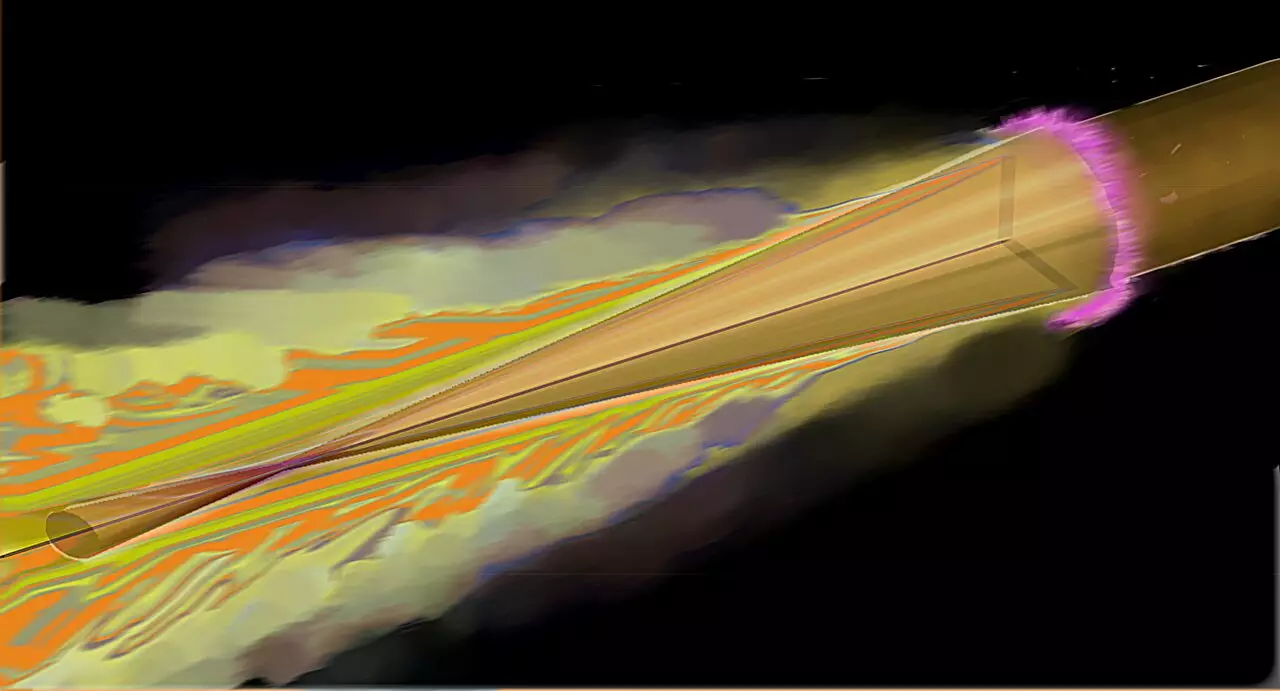The cosmos, with its stars and planets, embodies extreme conditions of pressure and temperature that defy human comprehension. Inside these celestial bodies, pressure can soar to millions of bars, while temperatures can reach several million degrees. Historically, replicating these conditions in a laboratory required cutting-edge facilities and powerful lasers, such as the National Ignition Facility (NIF) in California. However, the realm of astrophysics has undergone a significant transformation, as a collaborative research team from the Helmholtz-Zentrum Dresden-Rossendorf (HZDR) and the European XFEL has pioneered a less cumbersome method to replicate these extreme conditions. This revolutionary approach hinges on the use of a surprisingly simple and slender copper wire, narrow enough to be compared to a human hair.
Traditionally, researchers utilized high-energy lasers to bombard thin material samples in order to mimic the conditions found within stars and planets. The application of these intense laser pulses generates thermal shock waves, rapidly heating the material and compressing it in processes that last mere nanoseconds. During this transitory state, scientists gained valuable insights into the behaviors of matter under conditions akin to those existing in celestial interiors. One of the driving forces behind this research has been the European XFEL in Schenefeld, Germany, which offers ultra-short X-ray bursts that enable a closer examination of these fleeting phenomena.
In a noteworthy departure from previous methodologies, the study by HZDR employed a simpler apparatus that produced surprisingly effective results. The new setup involved firing ultra-short, albeit lower-energy laser pulses at a mere 25-micrometer-thick copper wire. These pulses, lasting only 30 femtoseconds but exerting an astounding output of 100 terawatts, proved immensely important for the experimental outcomes. This prompt interaction initiates a series of shockwaves and high-energy electrons that travel across the wire’s surface, reflecting the mechanics of internal processes occurring in stars and planets.
At the crux of this innovative method lies the concurrent utilization of a high-energy X-ray source. By systematically adjusting the time interval between the laser strikes and the ensuing X-ray emissions, the research team meticulously crafted a detailed series of X-ray films capturing the dramatic moments of interaction. As described by the study’s lead author, Dr. Alejandro Laso Garcia, the initial laser pulse not only generates shock waves but also facilitates the rapid movement of electrons along the wire’s surface. These electrons further heat the wire, creating additional shockwaves converging at the center. This fascinating interplay leads to extreme conditions where densities peak up to eight or nine times that of standard copper. This density is astonishing, corresponding to roughly 800 megabars or 800 million times atmospheric pressure, similar to conditions found within the Earth’s very core.
Moreover, the temperature readings soared to an astounding 100,000 degrees Celsius—conditions reminiscent of the corona surrounding a white dwarf star. This extraordinary achievement signifies a leap forward in materials science, providing invaluable insights into the nature of matter under extreme pressure and high-temperature environments.
The implications of this research extend significantly beyond gaining knowledge about our universe’s conditions. The findings indicate potential applications in studying the interiors of gas giants, like Jupiter, and even the properties of distant exoplanets that have been identified in recent years. The research team plans to explore materials beyond copper, including iron and plastic—an abundant compound containing hydrogen and carbon, elements prevalent in celestial environments.
Furthermore, the significance of this work touches upon the future of fusion research, a field striving for sustainable and abundant energy production. According to Ulf Zastrau, head of the HED group at the European XFEL, the ability to generate high densities and temperatures across various materials paves the way for advanced studies in fusion technology. As the global scientific community rallies around high-performance laser-based fusion power plants, this method allows for close examination of interactions within fuel capsules subjected to laser bombardment.
This breakthrough in replicating extreme cosmic conditions exemplifies the potential of innovative techniques to answer profound scientific questions. By using a combination of advanced laser technology and high-sensitivity X-ray beams, researchers have not only provided a new lens through which to understand the universe’s mechanics but have also opened new avenues for practical applications in energy generation. As the field advances, it is clear that the quest to unravel the mysteries of matter at extreme conditions has only just begun, heralding a transformative chapter in both astrophysics and fundamental physics research.

